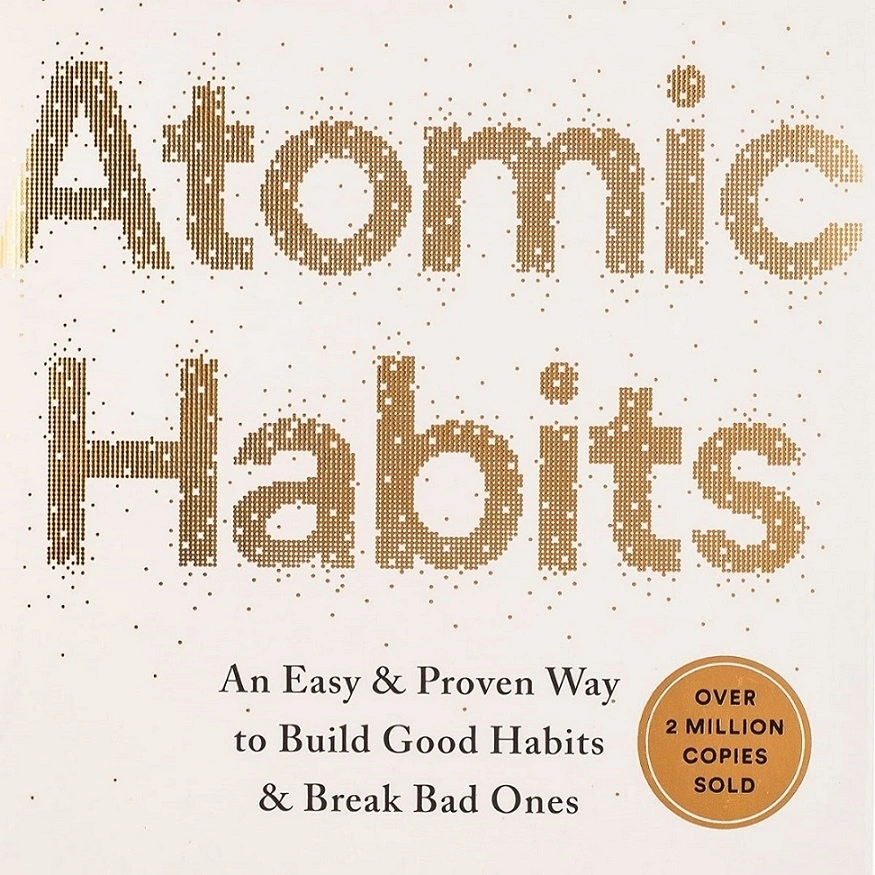Tiny Changes to our Habits, Remarkable Results. The holy grail of good habits is thousands of small improvements, day after day. To make a good habit stick – make it obvious around us, attractive to motivate, easy to do and satisfying in the end. Do the opposite for bad habits.
* * *
All of us, at some point, would have set goals. We then pursue them furiously for a few weeks, and then they fizzle out. This books asks you to forget those lofty goals and focus on your systems and processes.
Tiny one percent improvements, hardly noticeable to us, let alone to others, can be far far more meaningful in the long run, and can lead to astounding results. Habits built this way can also last for life.
But how to motivate yourself, day-in and day-out, to do those small improvements that show no immediate results ?
Identity based habits
Habits that are not made part of our identity, do not last. The ultimate form of motivation is when we make habit part of our identity.
We have to focus on the person who we wish to become, not on the outcome we want.
The more pride we take in that new aspect of our identity, the more motivated we are. So, start by saying to yourself first that you wish to become a great reader, writer, athlete or a leader and then do small things everyday to prove it to yourself. The more we reinforce that identity, the stronger is our will to maintain it.
The Habit Loop
Every good or bad habit that we make starts with four simple steps and then it repeats again and again to form a feedback loop that eventually builds the habit. So the way to build a good habit – or break a bad one – is to influence these four steps and that will change our behavior.
| 1. Cue : Trigger in your brain that wants a reward |
| 2. Craving : Our motivation for a response, for change |
| 3. Response : Actual thought are action we perform. Our habit |
| 4. Reward : The reward that satisfies craving and leads to next cue |
From here on, the book is more about how we change our behavior on each of those 4 steps above.
- Cue – Make it Obvious
Write down the current habits (good and bad), be specific when and where you will do a good action and write it down (like a gym visit, reading a book), link a new habit to a good one you already have and do it immediately after, make the cues for good habits more visible around you and hide away the cues for bad habits. Out of sight, out of mind. - Craving – Make it Irresistible
Do temptation bundling by liking an action you want to do with an action you need to do. Surround yourself with people who already have the habits that you want to have yourself and you will rise together. Do something you enjoy immediately before a difficult habit so it becomes attractive. - Response – Make it Easy
Create an environment where doing the right thing is as easy as possible. Reduce the friction associated with good habits and purposefully increase friction associated with bad habits. Take control of a handful of moments in the day that determine how your day will be spent. When you start a new habit do it for just 2 minutes until it becomes a ritual and part of your identity. Do something out of ordinary if needed so you can lock-in a good habit and force a bad habit out. Use tech to automate stuff so the good habits continue (like a timer for gym, an internet-blocker to sleep early etc.) - Reward – Make it Satisfying
Make the habit stick in the initial days by giving yourself small immediate rewards (of course good rewards!). Try to track habits because it gives visual cues to act, motivates you and makes you feel satisfying – but don’t overdo it or be obsessed with the numbers! On your bad days, try and stick to your good habit routine even if you cant do them well. Make it instantly painful for missing a commitment you made to yourself, so it acts as a deterrent.
One of the best ways to ensure our habits remain satisfying over long run is to pick behaviors that align with our personality and skills. We have to work hard on things that come easy to us so we have better chances of success.
Follow the ‘Goldilocks Rule’ and set challenges in your habits at manageable difficulty – not too hard to discourage you, not too easy to bore you. You have to fall in love with the process and the boredom that comes with it to make a habit. Stick to the schedule.
Habits need to come with deliberate practice and not mindless repetitions for you master something. Reflect and review often. Keep your identity small so you can redefine yourself and mold your habits to changing world around you.
